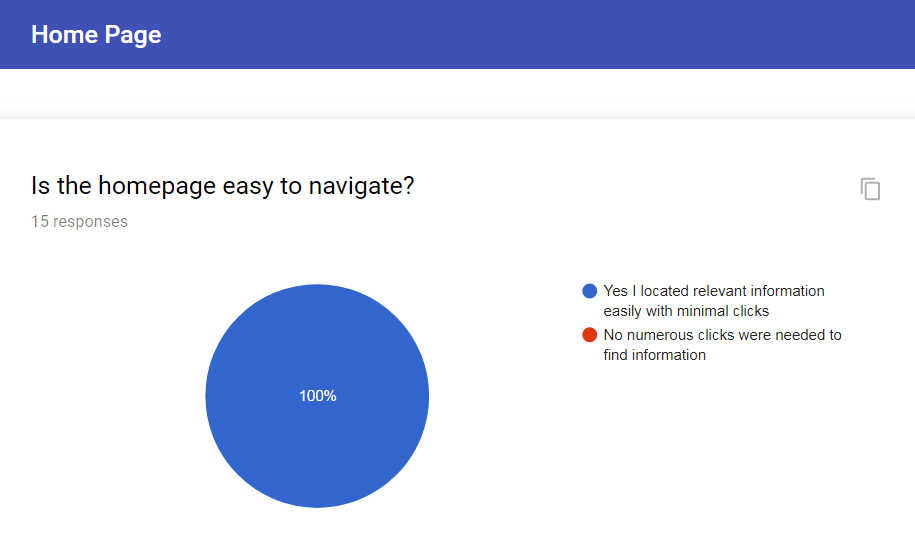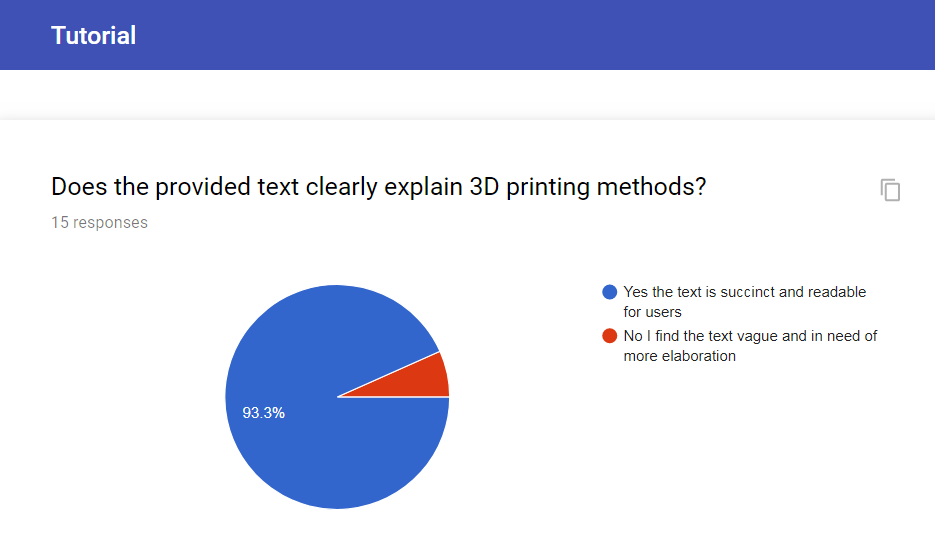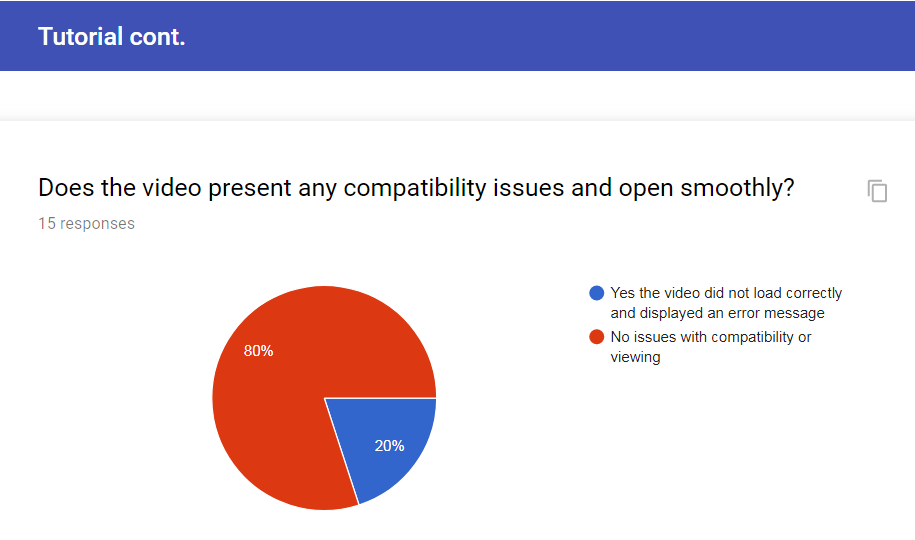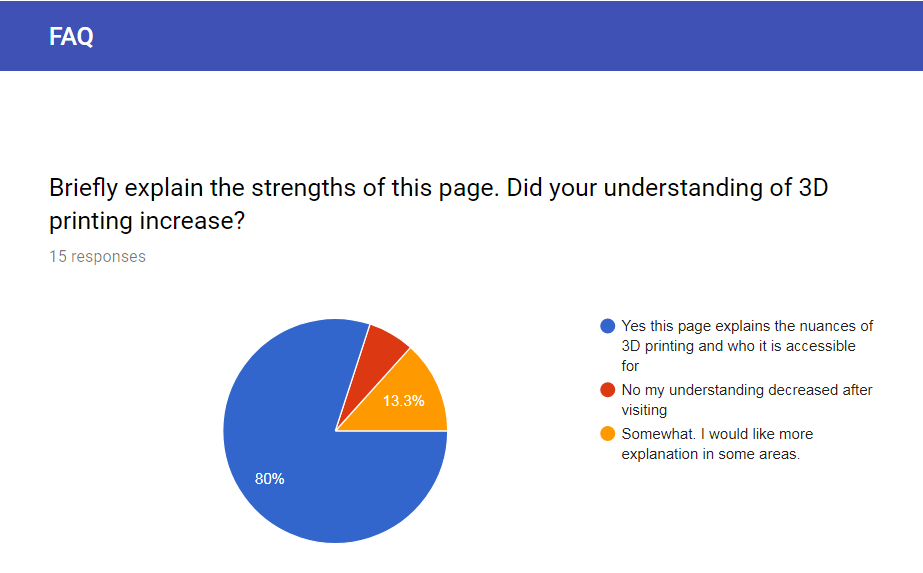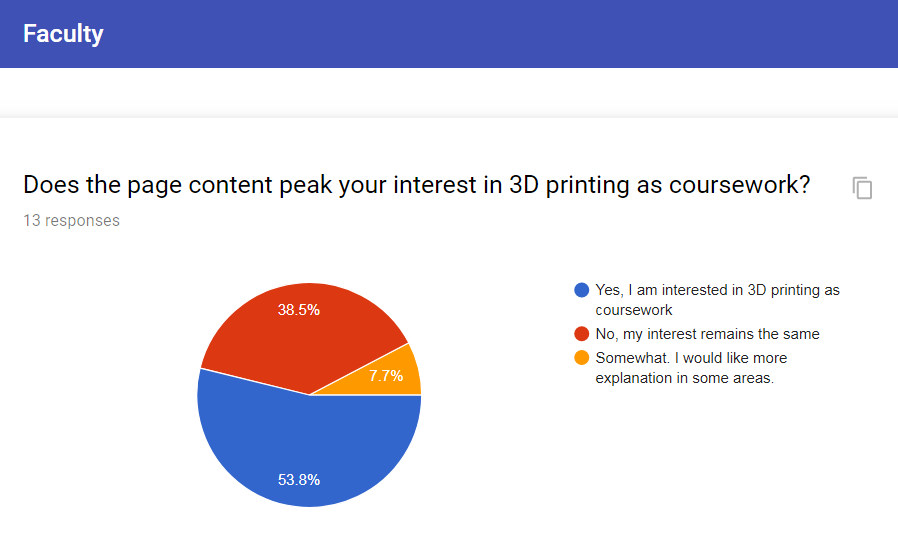Usability Study
Methods
For the usability test all participants were sent a link to the Group B website and a link to the anonymous Google Forms survey. After navigating through the site, participants were asked to complete the survey. Eight of the subjects were also asked if they had additional feedback about the website, specifically the navigation, design, and content. They were provided a list of three open ended questions. This portion was optional.
Demographics
Participants were asked three demographic questions at the beginning of the survey:

Question 1: Were you familiar with 3D printing prior to taking our test?
Results:
- 66.7% of our participants answered "Yes"
- 33.3% of our participants answered "No"
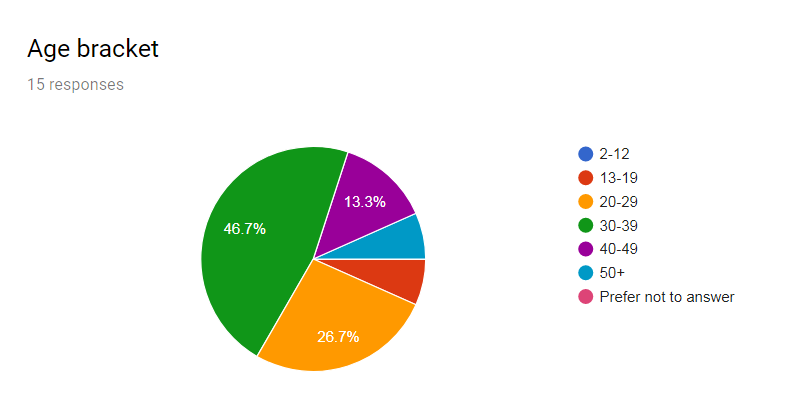
Question 2: What is your age bracket?
- 46.7% of our participants selected 30-39 years-old
- 26.7% of our participants selected 20-29 years-old
- 13.3% of our participants selected 40-49 years-old
- 6.65% of our participants selected 13-19 years-old
- 6.65% of our participants selected 50+ years-old
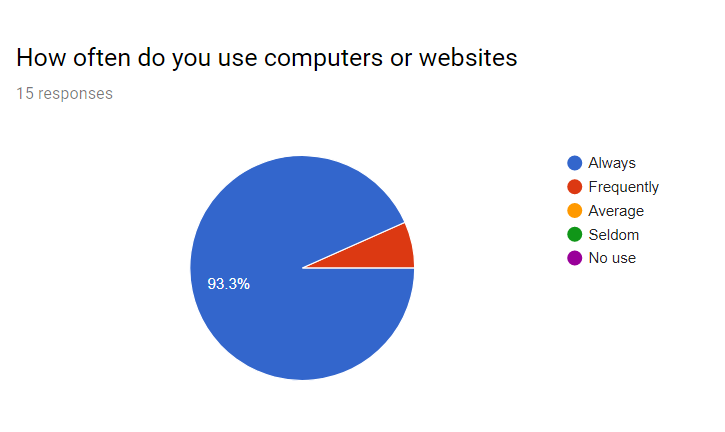
Question 3: How often do you use computers or websites?
- 93.3% of our participants selected "Always"
- 6.7% of our participants selected "Frequently"
This random sample provided a large variety of people of appropriate age and skill level who represent the demographic that Group B thought would frequently use the website.
Results
These page specific results provided insight into the usability of each page.
The feedback provided from in-person participants ranged from design issues to content issues. Some participants' suggestions included increasing the number of videos on the site. Other suggestions asked that more context be provided for the 3D images on the site to inform visitors if an object is coursework, etc. Participants also noted that some navigation links were not working correctly.
Several design elements were questioned. One participant suggested adding a slide-show to the gallery. Other participants pointed out that the banner image was cut-off and the color of the gallery box was less than desirable. Most of the content received favorable feedback which aligns with the feedback from the anonymous survey. Overall the in-person feedback was little more in-depth than information that was gathered from the anonymous survey.
The usability testing made the creators aware of the limits of the chosen webhost. Because of the origin of GitHub pages, the PHP that was designed to validate the make an appointment form could not work with the webhost. The form code works with a mail to option that requires the user to hit send once the data from the form pops up in their email program. This was changed after the test was implemented.
Changes were made to improve microsite functionality including repair of broken links, changing the appointment form, and rewording or adding content information based on usability test respondents feedback. These improvements will enable users to utilize the site easily without issues.

